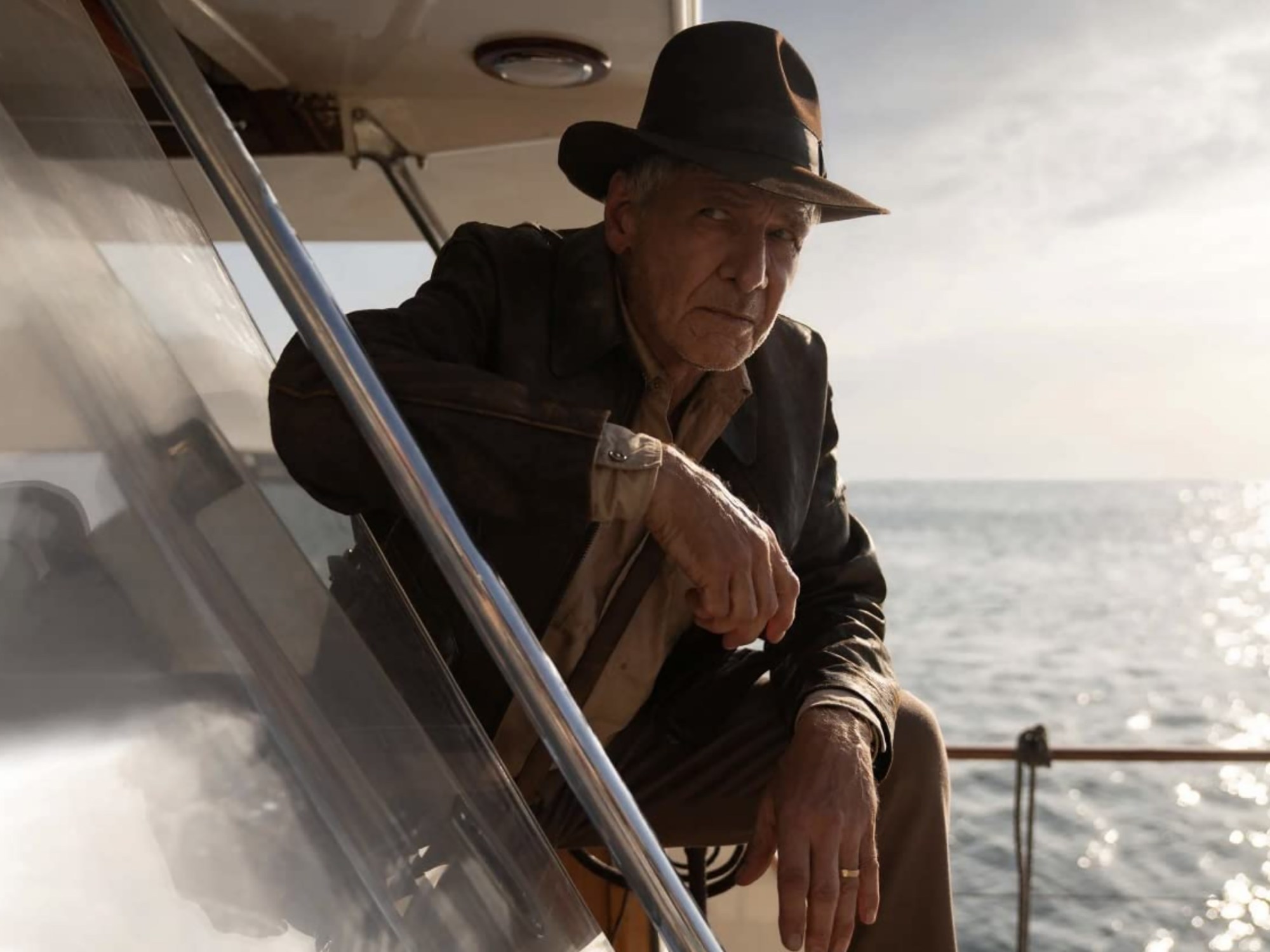
- Film
The Long Road to Indy 5
At the time of its scheduled release on June 30 of this year, the leading man of Indiana Jones and the Dial of Destiny will be just two weeks shy of his 81st birthday. But debates and jokes about his age are the last thing Harrison Ford wants to hear, and rightfully so. After all, he told an HFPA-member 15 years ago, when asked if he still had the physical strength to play Indy, that “I could kick your ass!”
It’s been a long and winding road to the fifth installment of the Indiana Jones franchise. First announced in the summer of 2008 at the time of the release of the fourth film, Indiana Jones and the Kingdom of the Crystal Skull, Harrison Ford said he was ready for another one, if it did not take another twenty years to develop – which this one had. He also told the HFPA that “Indiana Jones is the same age I am. The part of the fun of Indiana Jones is always that he’s in over his head most of the time. And so, the physical aspects of the character are always tempered a little bit by that reality. But I’ve always enjoyed that, the physical acting. I’m still fit and capable. I love running, jumping, falling down, rolling around with sweaty men.”
The original idea for the character and story goes back 44 years, to 1979, when two of the hottest young directors/producers of that decade, Steven Spielberg and George Lucas, made a deal with Paramount Pictures for five action-adventure films featuring a beat-up hat-wearing, globe-trotting archaeologist and college professor named Indiana Jones. Two years later Raiders of the Lost Ark became the highest-grossing film of the year. Followed by The Temple of Doom (1984), The Last Crusade (1989) and the aforementioned Crystal Skull (2008).
What transpired in the 15 years between 2008 and 2023 makes the fact that there now exists a fifth and final film seem like a miracle from God and opens the door for a TV-series about its making of, in the vein of The Offer. First, Spielberg and Lucas haggled over the story, the latter accusing the former of “living in the past while I am living in the future” as he told THR. In 2012, Lucas threw in the towel and handed the production to Kathleen Kennedy when she became the president of Lucasfilm which was just acquired by Disney, giving the parent company intellectual rights of all future films. Disney also bought distribution and marketing rights from Paramount (which still gets a piece of the action, however). Kennedy was busy with the Star Wars sequels, and progress lingered until David Koepp was hired to write the screenplay in 2016 with a scheduled release date three years later. Rewrite after rewrite followed and Koepp was eventually replaced by Jonathan Kasdan in 2018, then rejoined the team, but exited when all versions of the screenplay kept getting rejected, mostly over Ford throwing back ageism-jokes. In 2020 Spielberg quit as director and that job went to James Mangold who co-wrote the script with Jez and John-Henry Butterworth, making it the only film of the franchise NOT written by Lucas and NOT directed by Spielberg (although he remains as executive producer). Mangold owes his involvement to both the fact that Spielberg felt the story needed fresh eyes and to his friendship with Ford who had worked with him on The Call of the Wild.
Filming finally began in June of 2021 and concluded eight months later in February of 2022. Locations included England’s Pinewood Studios and a street in Hackney in London, Bamburgh Castle and North Yorkshire Moors Railway near Grosmont as well as Glasgow, Scotland.
A month later production moved all over Sicily, from Syracuse, the Ear of Dionysius Cave, the Grotta dei Cordari cave, the Neapolis archaeological park and Castello Maniace, as well as the city of Cefalù and the province of Trapani. Fez, Morocco served as the last location.
The Dial of Destiny continues where Crystal Skull left off and starts like the previous four films with a flashback to an earlier time in Indiana Jones’ life. In this case it is 1969 and the archeologist/explorer finds himself living against the backdrop of the space race and is uneasy that the US-government has recruited former Nazis to help with the competition against the USSR. His goddaughter, Helena – played by Phoebe Waller-Bridge – accompanies him on his journey. The villain he is up against is Jürgen Voller (Mads Mikkelsen) a NASA employee and ex-Nazi involved with the moon landing, who has his own vision for world and space domination. The cast is rounded out by Antonio Banderas who plays Indy’s sidekick Renaldo, Toby Jones as Basil, another ally, and German actor Thomas Kretschmann as Colonel Weber who works with the Nazi Voller. Jonathan Rhys-Davies reprises his role as Sallah.
Given the storyline, Ford’s age is clearly an issue within the film and the fact that writers, director and producers had always rejected the idea of casting a younger actor in the flashback scenes. Instead, and in part thanks to ILM technology, Ford was digitally de-aged for the film’s 1944 opening sequence. When he discussed the film with THR, Mangold said: “It reminds the audience of the contrast between a hero in his physical prime and a hero at 70… what he’s survived, what he’s accomplished.” The first image – a silhouetted Jones in a cave – was shown in May 2022 during the Star Wars Celebration, followed by more footage at the D23 Expo in September and the trailer during the Superbowl a month ago.
Indiana Jones and the Dial of Destiny is the final film in the series, and as Mangold said: “This is a movie about a hero at sunset.” As such, any jokes about the leading man’s age are on us, not the title character.

